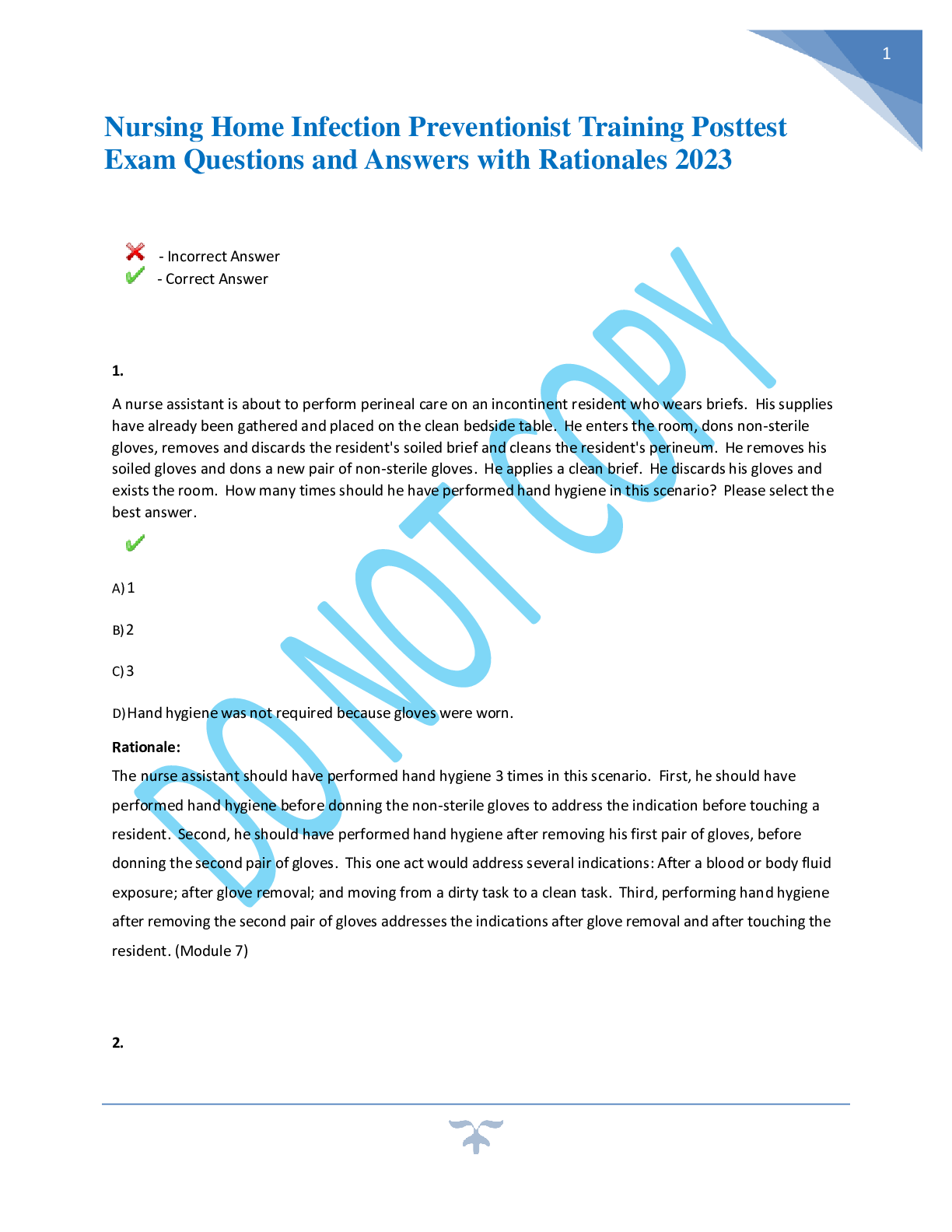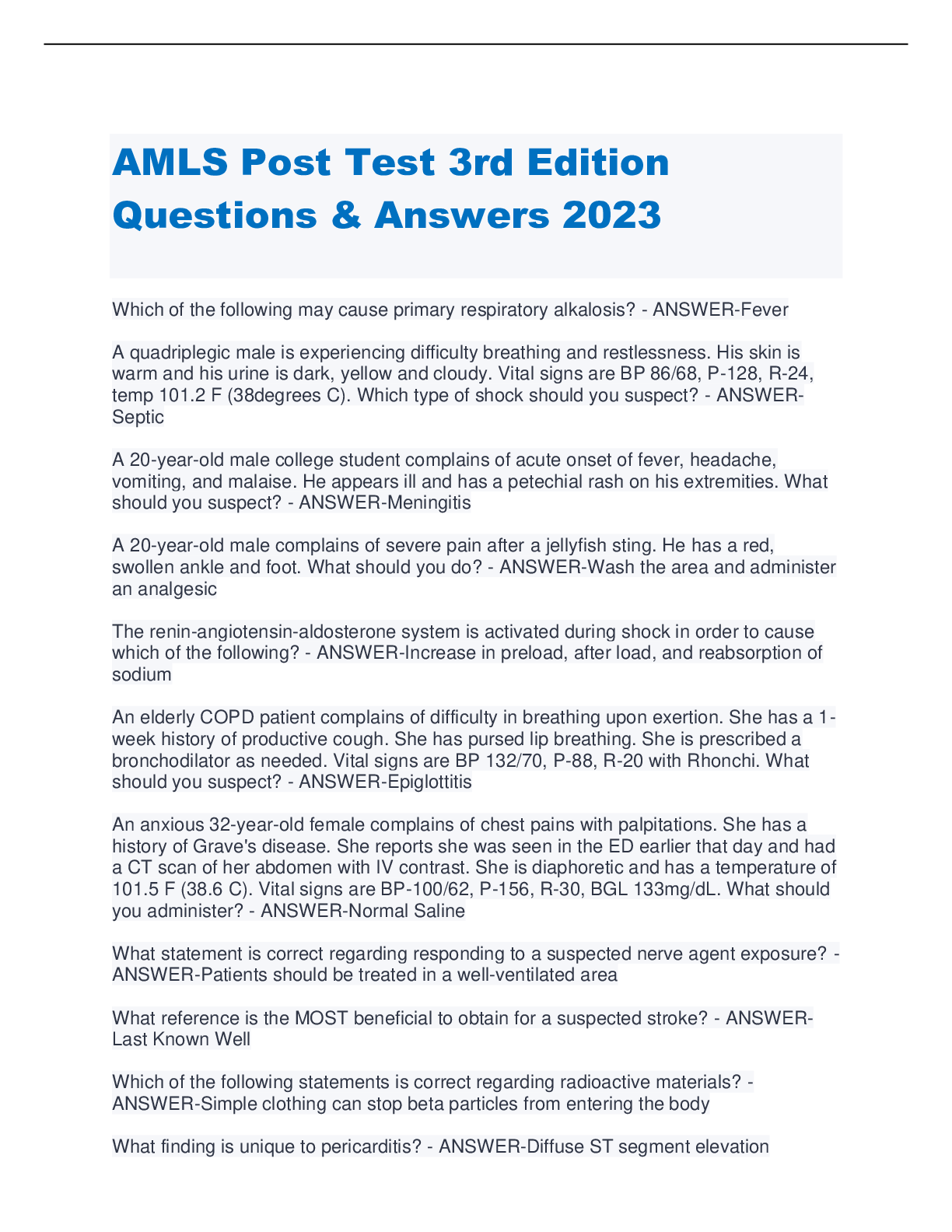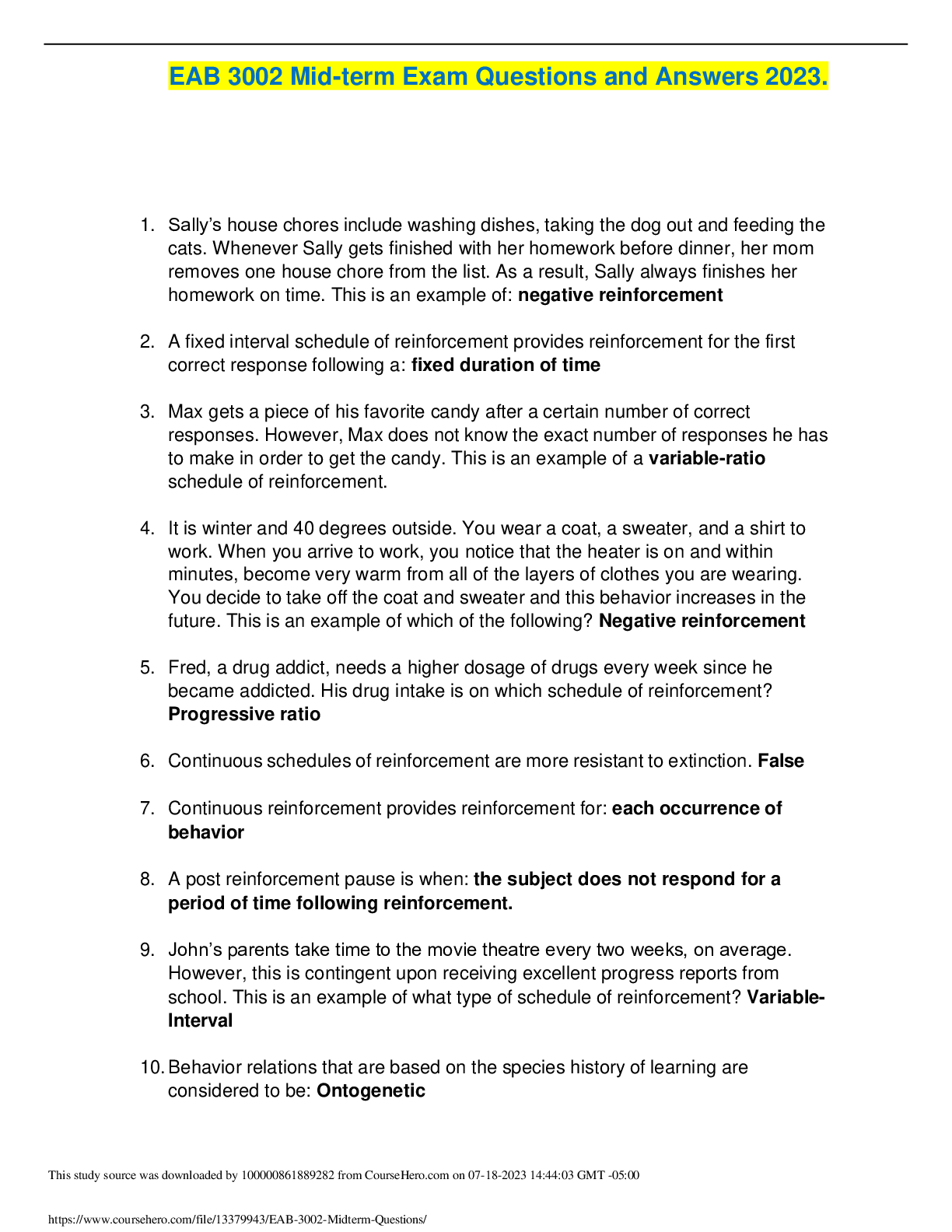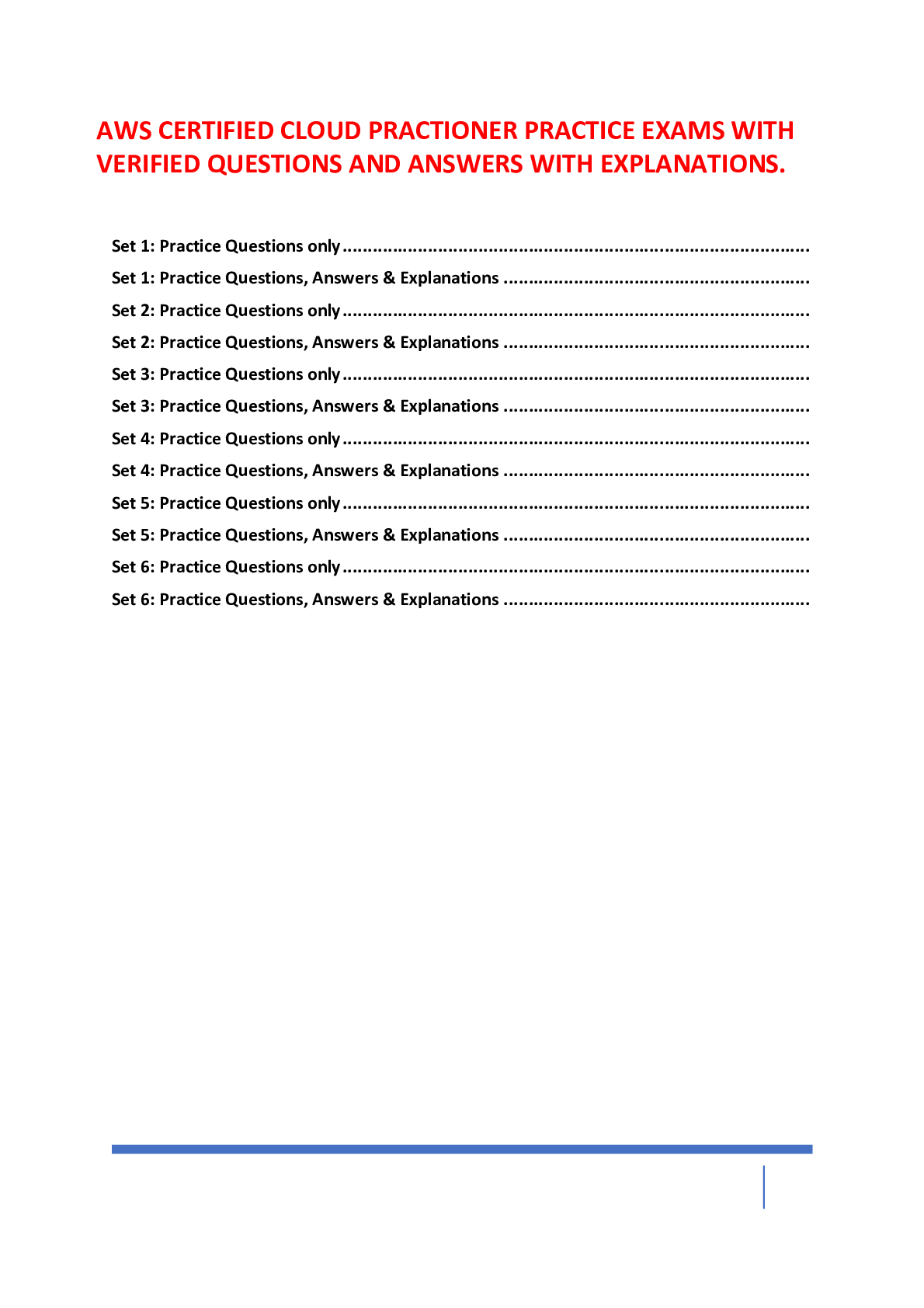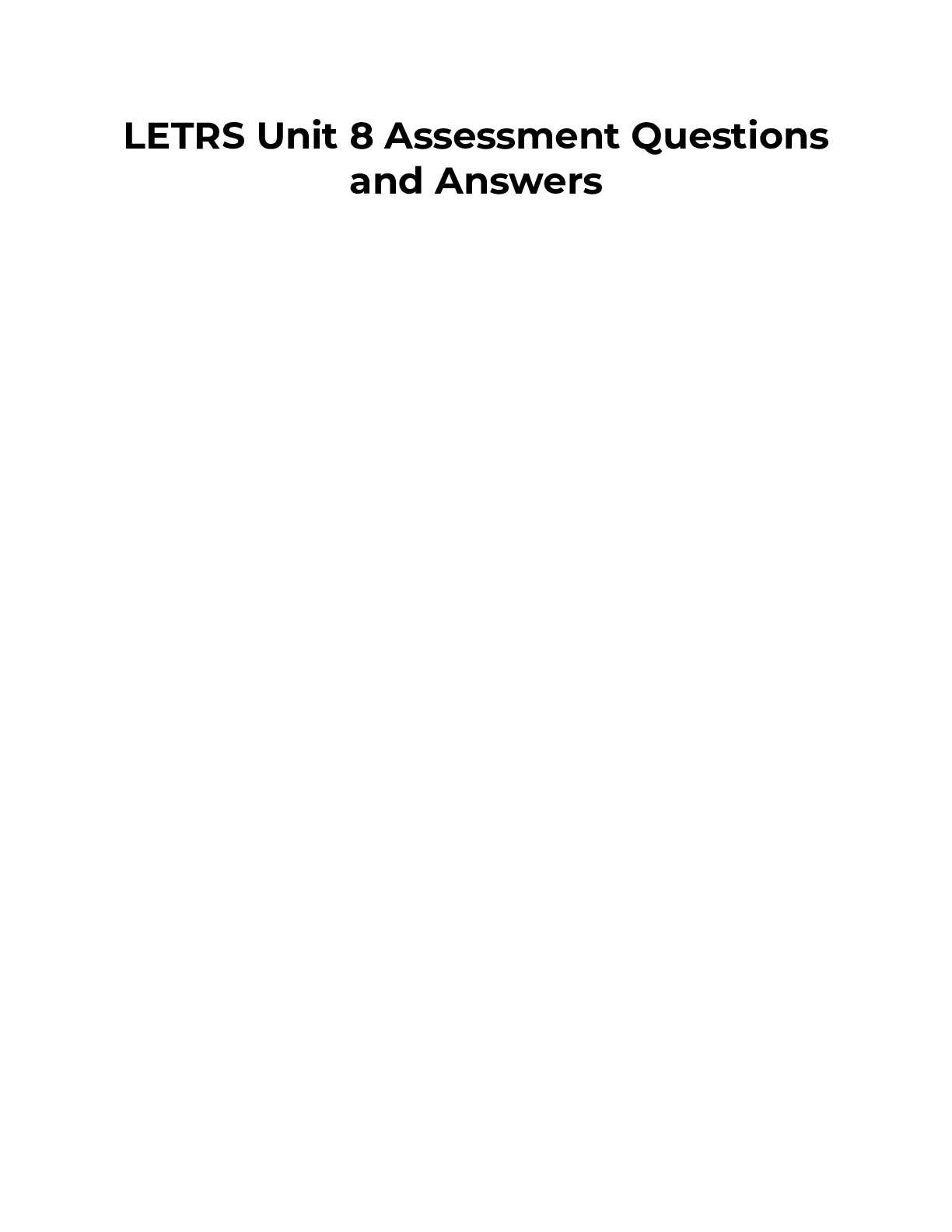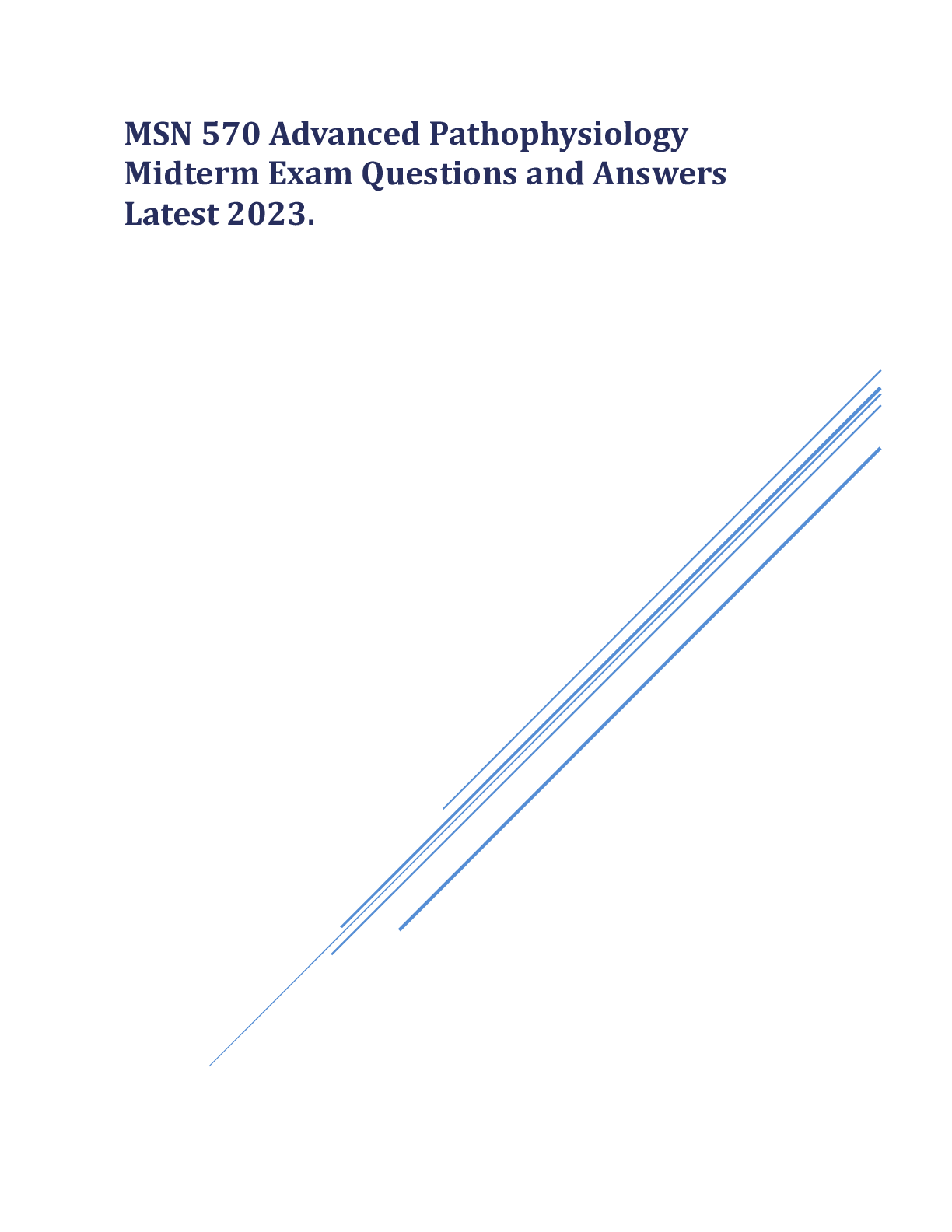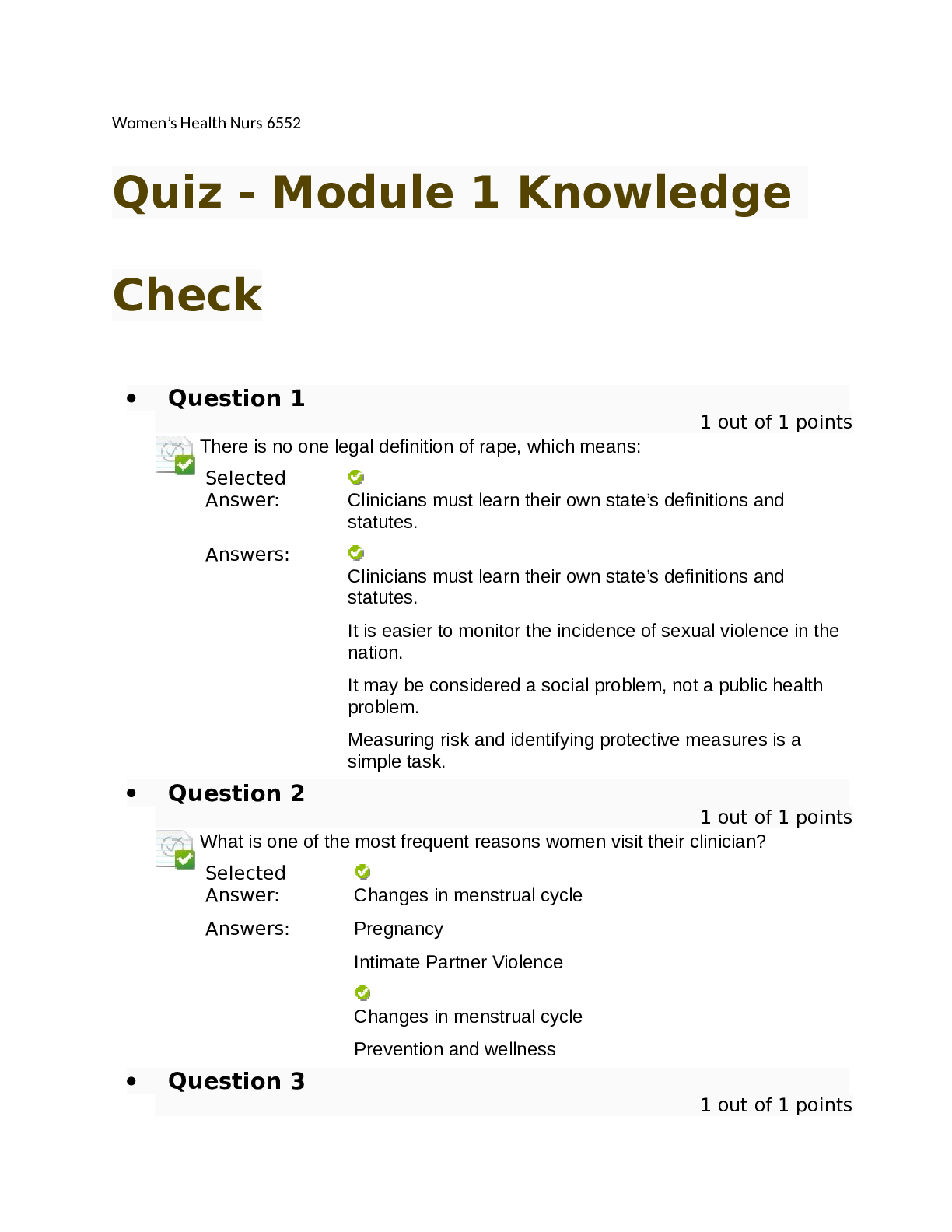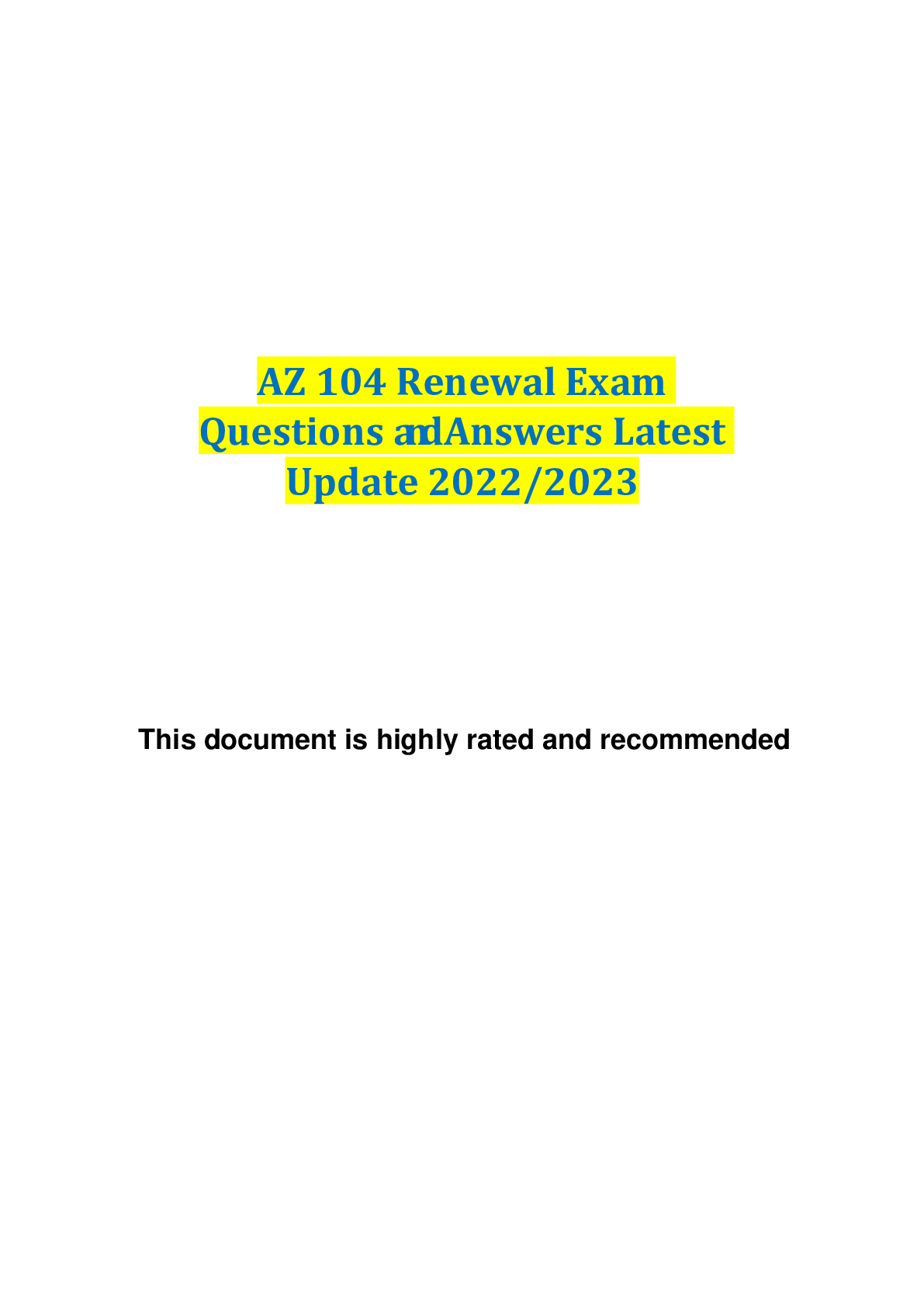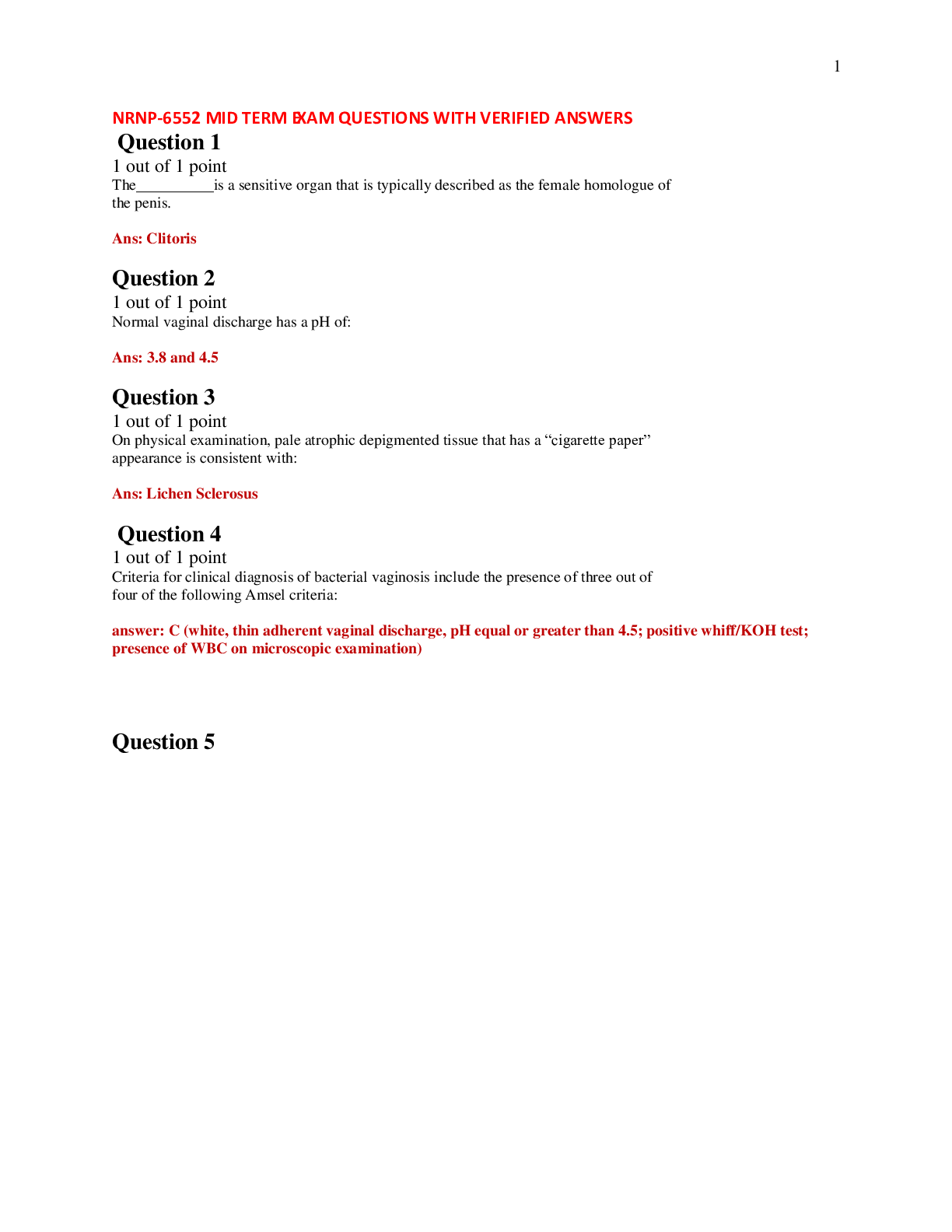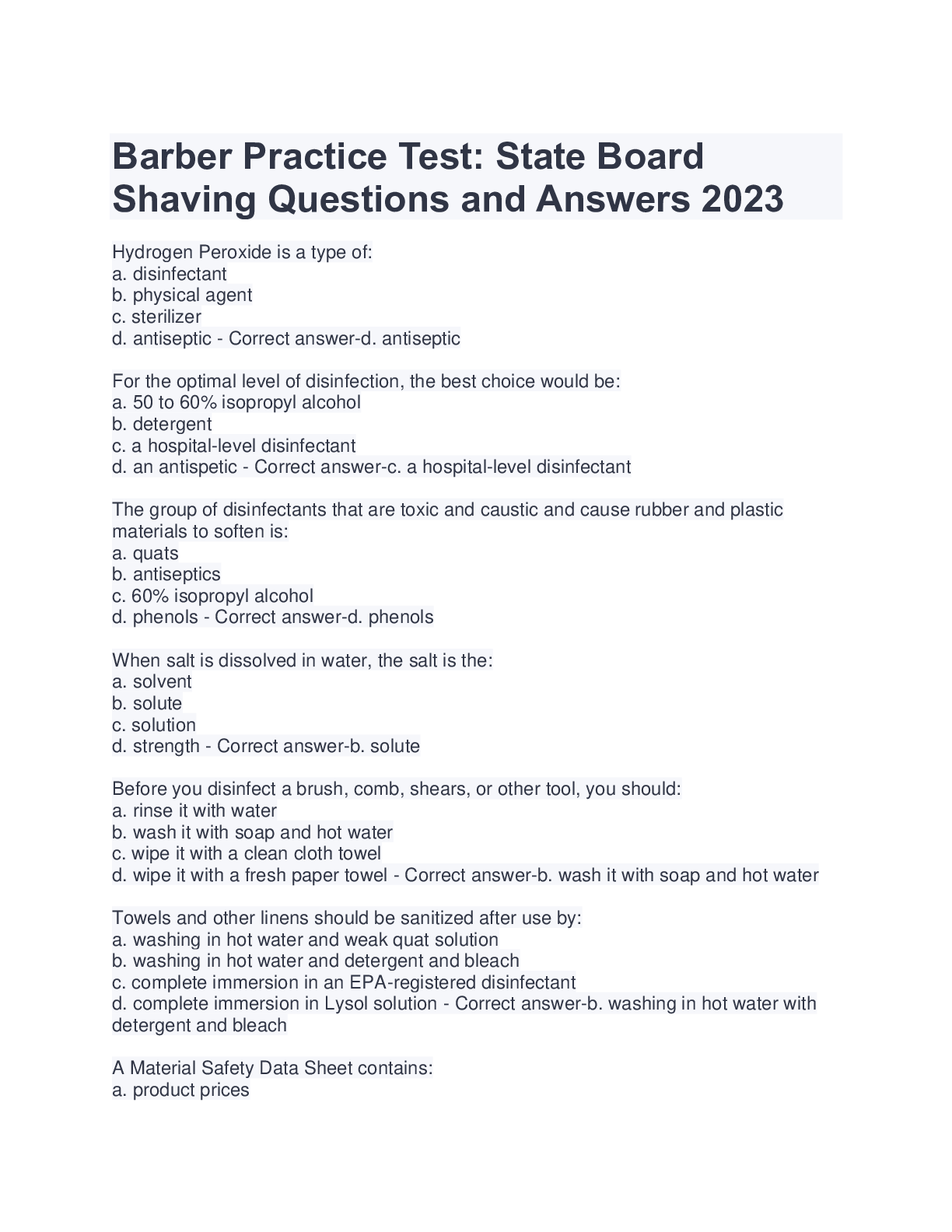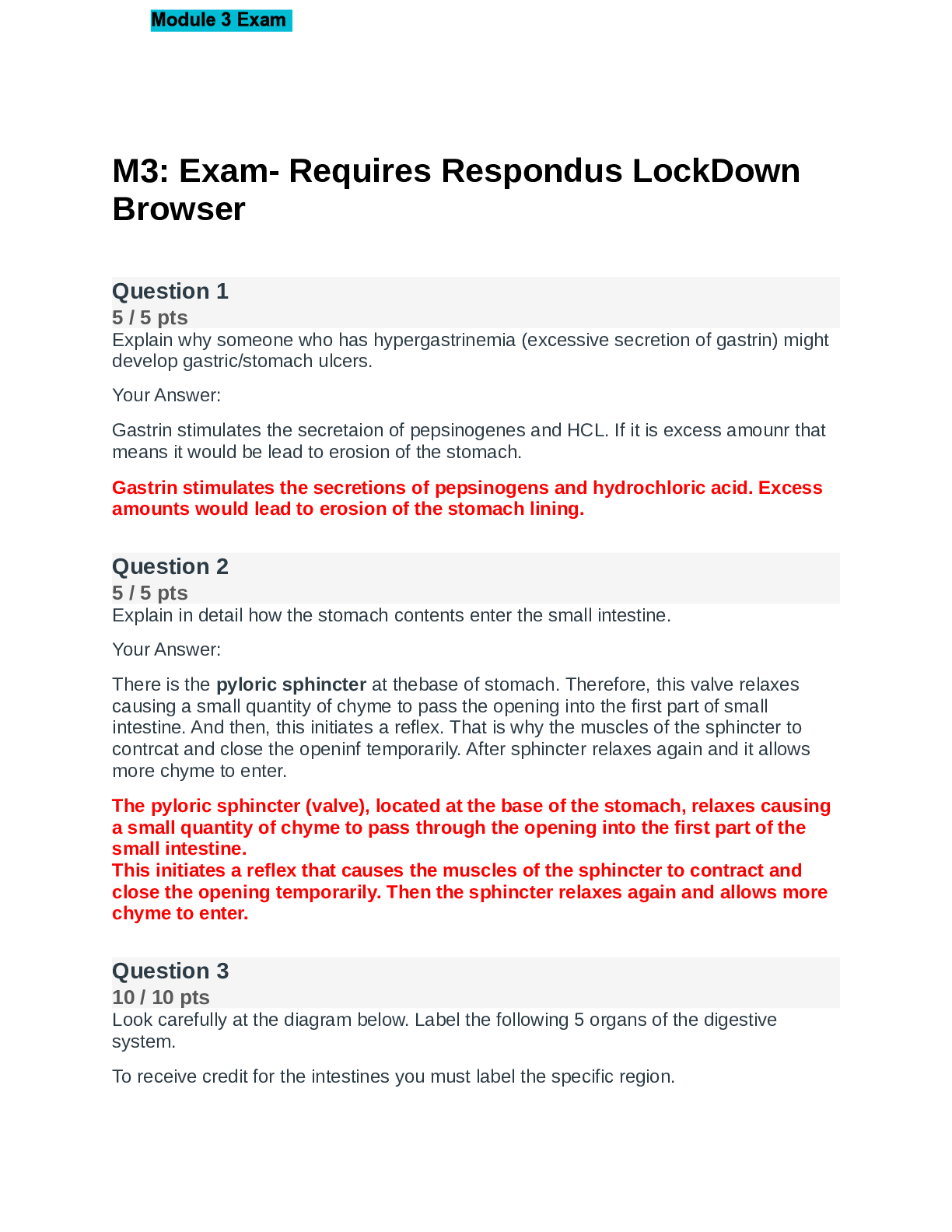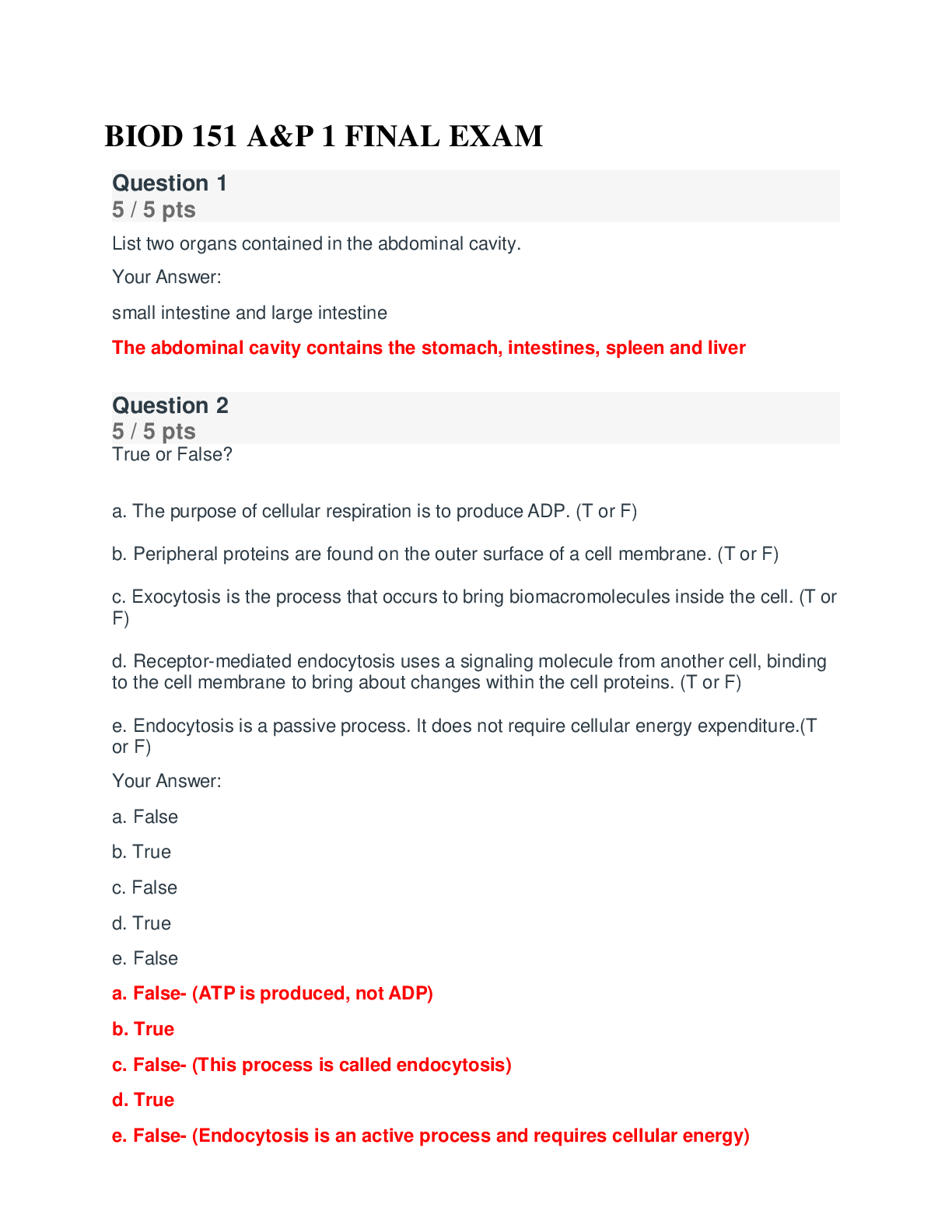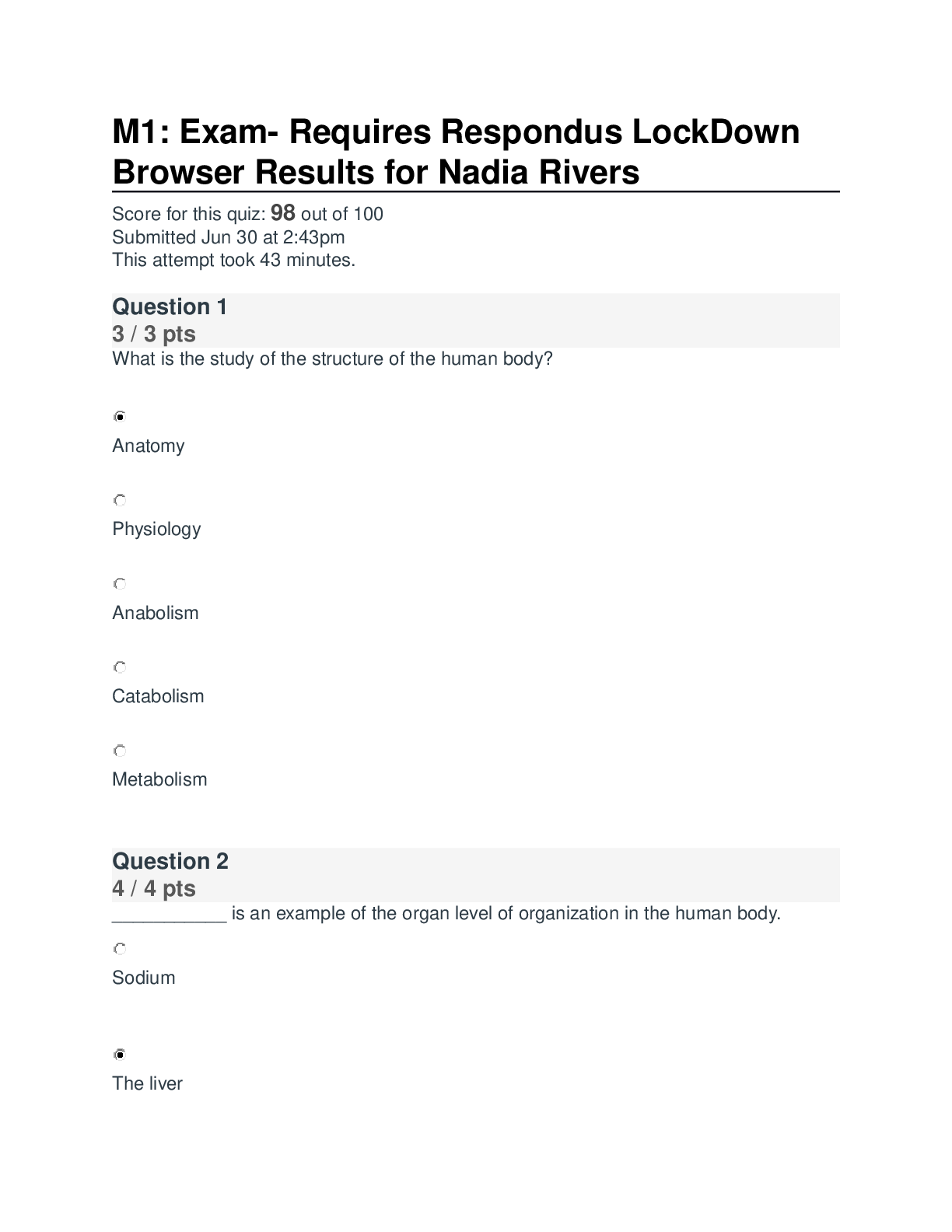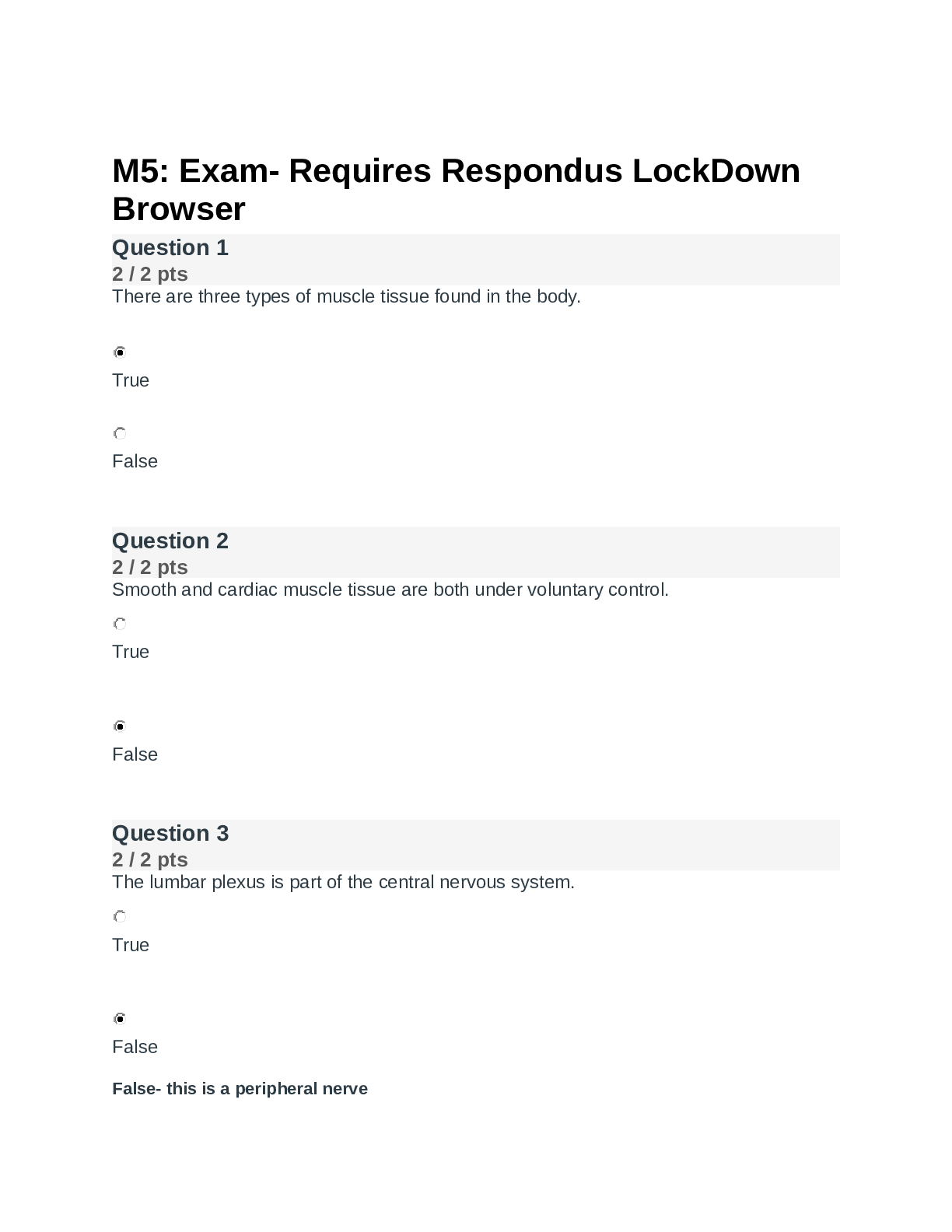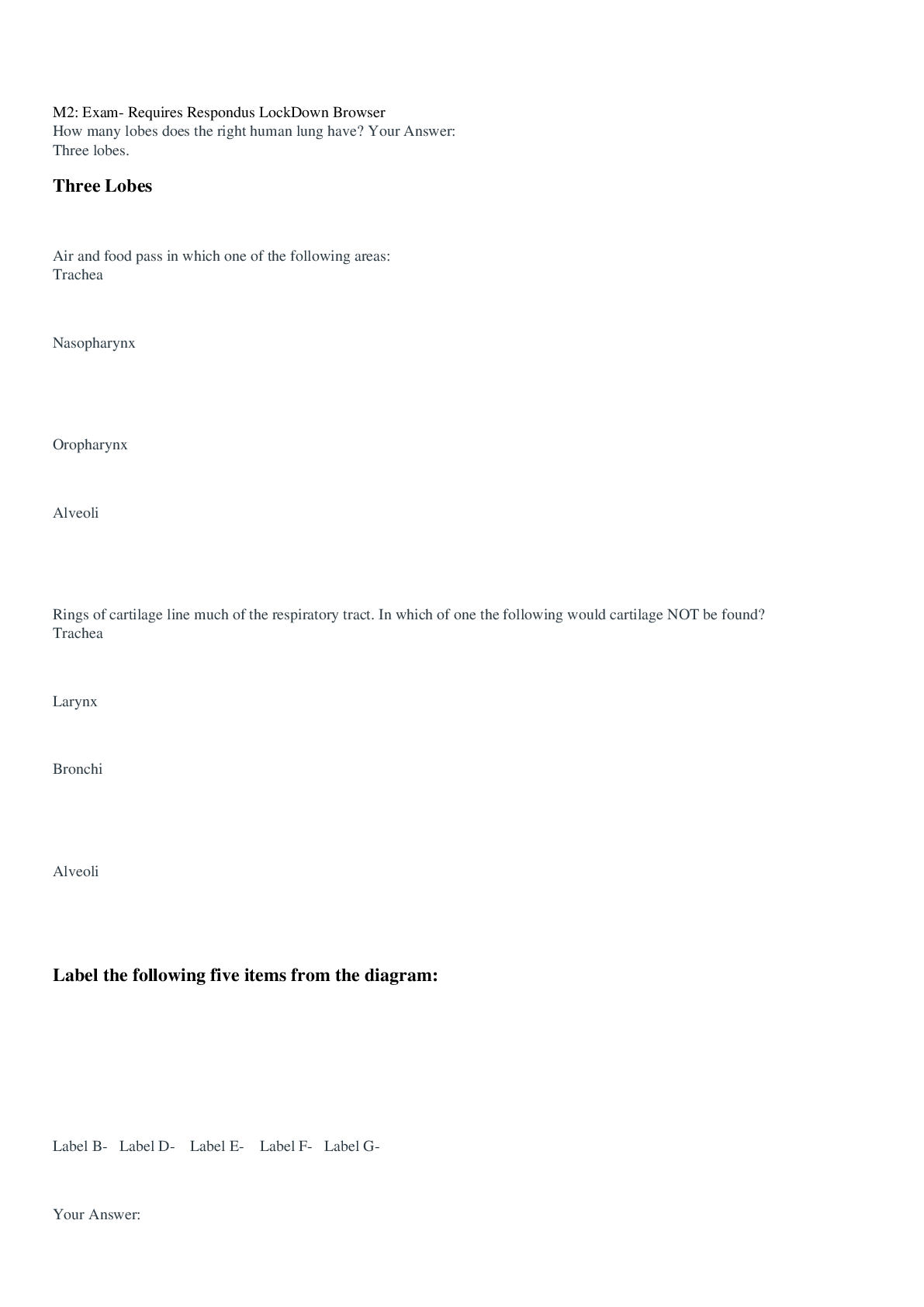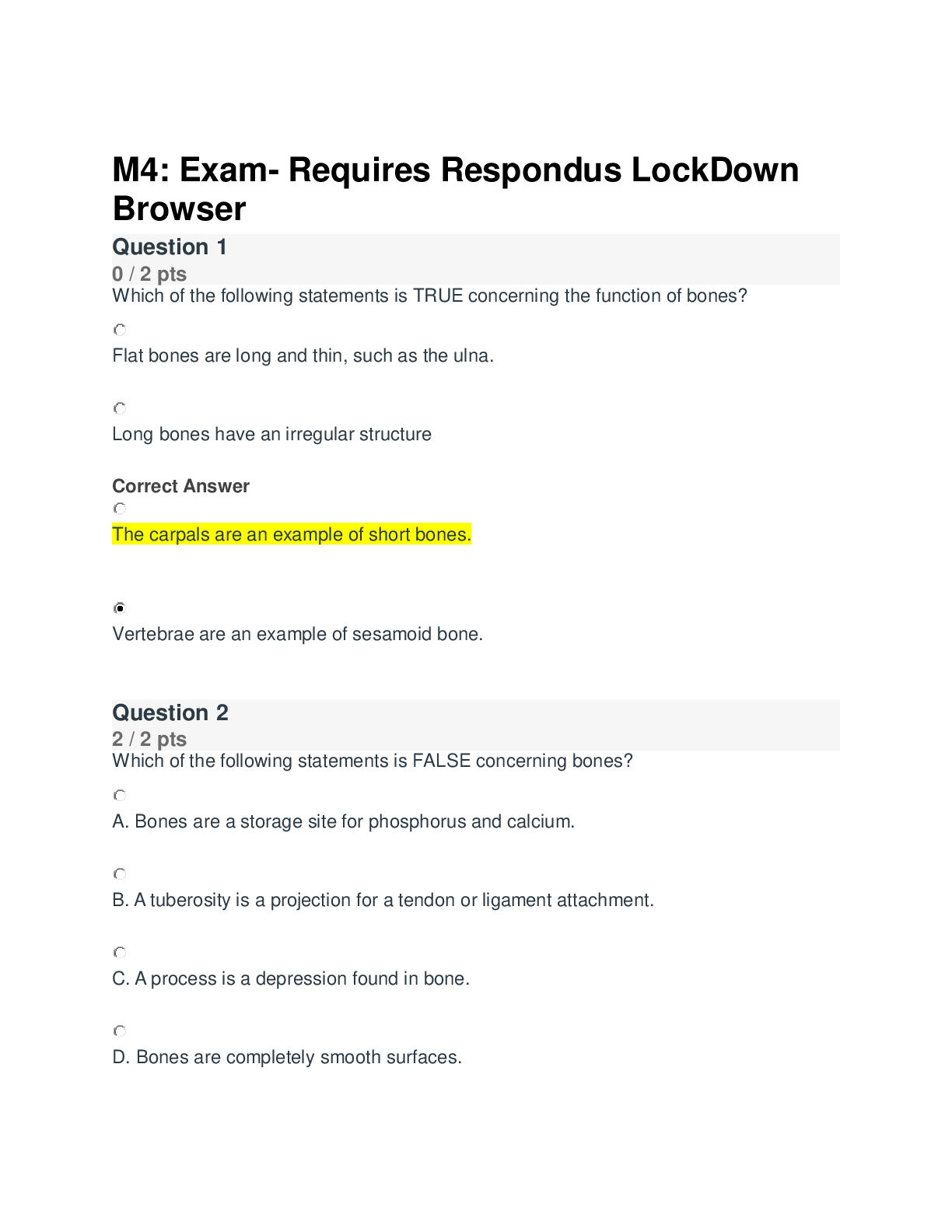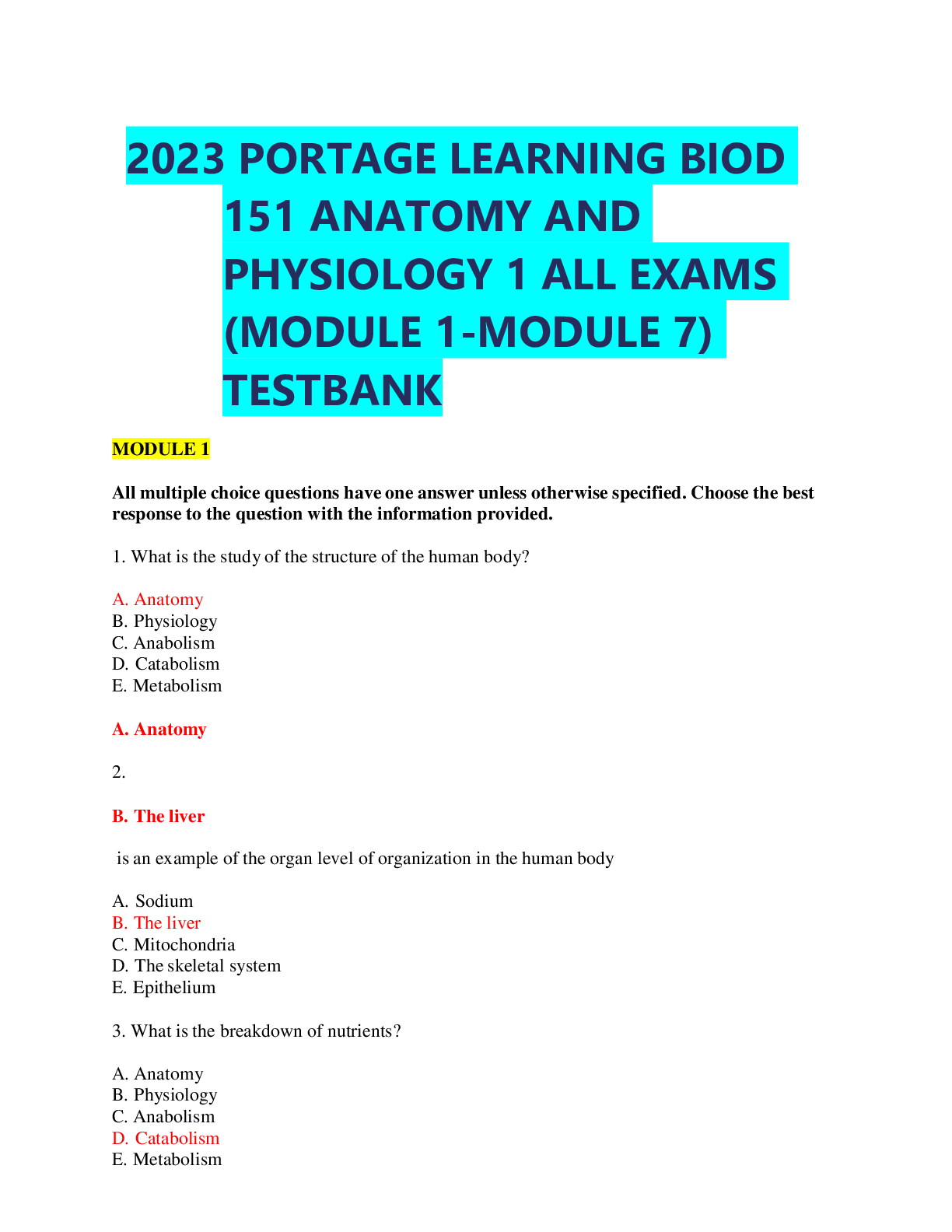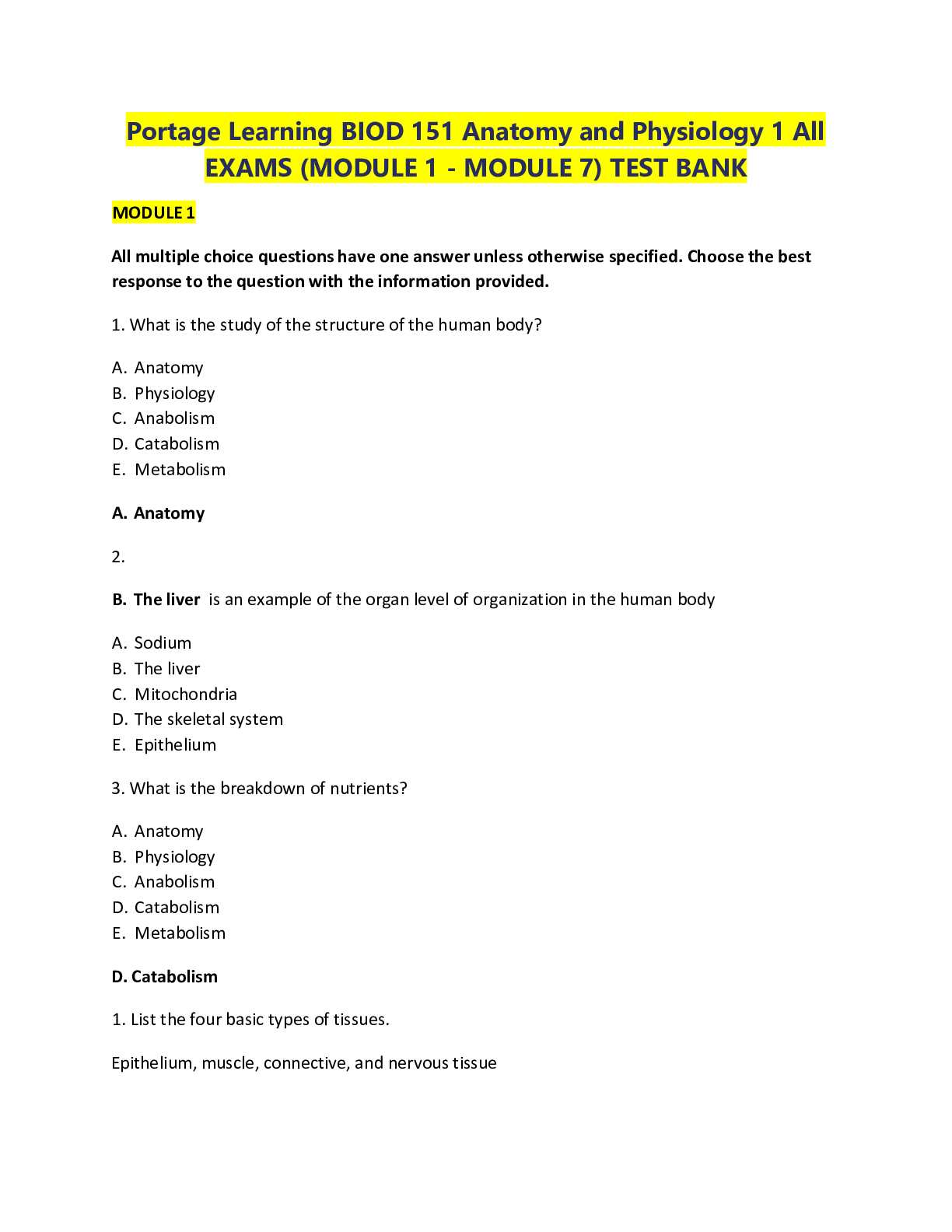BIOD 151 Module Exam / BIOD 151 Anatomy & Physiology
Document Content and Description Below
1. What is the study of the structure of the human body? A. Anatomy B. Physiology C. Anabolism D. Catabolism E. Metabolism A. Anatomy 2. B. The liver is an example of the organ leve... l of organization in the human body A. Sodium B. The liver C. Mitochondria D. The skeletal system E. Epithelium 3. What is the breakdown of nutrients? A. Anatomy B. Physiology C. Anabolism D. Catabolism E. Metabolism D. Catabolism 1. List the four basic types of tissues. Epithelium, muscle, connective, and nervous tissue 2. List the three layers of the skin in order from deep to superficial. The deepest layer of the skin should be at the top of your list. To receive credit the layers must be in this order. hypodermis (inner, also called subcutaneous tissue layer) dermis (middle layer) epidermis (outer layer) *MUST be in this order (top to bottom) to receive credit 3. Testosterone contributes to muscle strength and bone mass. Based upon your learning of metabolism, would it be considered an anabolic or catabolic hormone? Explain why. Anabolic because it is building new tissues from smaller cells and using energy to do so. Note: Essay answers must clearly be in your own words. All multiple choice questions have one answer unless otherwise specified. Choose the best response to the question with the information provided. 1. What anatomical orientation term is used to indicate "toward the front of the body"? A. Superior B. Inferior C. Ventral D. Dorsal E. Medial C. Ventral 2. What anatomical orientation term is used to indicate "toward the upper part of a structure"? A. Superior B. Inferior C. Ventral D. Dorsal E. Medial A. Superior 3. What anatomical orientation term is used to indicate "away from the head end"? Inferior/Caudal 4. What anatomical orientation term is used to indicate "further from the origin of the body part"? Distal 5. You are looking at a diagram of a patient standing in anatomical position. On the sheet of paper containing the diagram, which thumb points to the left side of the paper, right or left? Right Note: Essay answers must clearly be in your own words. All multiple choice questions have one answer unless otherwise specified. Choose the best response to the question with the information provided. 1. Are the arms part of the axial or appendicular region of the body? Appendicular 2. A patient is standing in anatomical position. The patient moves his hand to scratch his nose. What anatomical action term is best used to indicate the motion occurring at his elbow? A. Flexion B. Extension C. Elevation D. Depression E. Abduction A. Flexion (“closing of a joint”) 3. What anatomical action term is used to indicate "movement away from midline"? A. Flexion B. Extension C. Elevation D. Depression E. Abduction E. Abduction Note: Essay answers must clearly be in your own words. All multiple choice questions have one answer unless otherwise specified. Choose the best response to the question with the information provided. 1. Describe the position of the epigastric region relative to the umbilical region in anatomical position terms. Use a full sentence for your description. The epigastric region is superior to the umbilical region. (OR) The umbilical region is inferior to the epigastric region. 2. Which anatomical action is occurring at the elbow joint, in the direction of the arrow? (Elbow) Flexion 3. Look at the figure below. The right femur is moved in the direction of the arrow. What anatomical action term best describes this movement? Abduction (The femur is moving away from midline) Note: Essay answers must clearly be in your own words. All multiple choice questions have one answer unless otherwise specified. Choose the best response to the question with the information provided. 1. List two organs contained in the pelvic cavity. The pelvic cavity contains the bladder, reproductive organs and the rectum 2. True or False: The ventral body cavity contains the cranial cavity, the thoracic cavity, and the abdominal cavity. If your answer is false, rephrase the statement to make it a true statement. False. The ventral cavity contains the thoracic cavity and the abdominal cavity. (It does not contain the cranial cavity) Note: Essay answers must clearly be in your own words. All multiple choice questions have one answer unless otherwise specified. Choose the best response to the question with the information provided. 1. Using the letters given, match the cell with the type of solution it has been placed in: A cell beginning to swell A. Isotonic A red blood cell placed in ocean water B. Hypertonic A cell containing an equal amount of solute as the solution C. Hypotonic C. A cell beginning to swell B. A red blood cell placed in ocean water A. A cell containing an equal amount of solute as the solution 2. Using the letters given, match each molecule/item with its typical means of entering a cell. You will need to use some means of entry more than once. Oxygen A. Diffusion Lipid-soluble molecules B. Facilitated diffusion Bacteria C. Endocytosis Polar molecules A. Oxygen A. Lipid-soluble molecules C. Bacteria B. Polar molecules 3. Which one of the following is not true of active transport? A. Active transport occurs against the concentration gradient B. Carrier proteins move particles from greater concentration to lesser C. The sodium-potassium pump is an example D. additional energy is required to drive this process B. Carrier proteins move particles from greater concentration to lesser 4. List the three organelles, in order, involved in the synthesis, transport and shipping of proteins. A. rough ER, Golgi complex, lysosomes B. ribosomes, rough ER, Golgi complex C. ribosomes, smooth ER, Golgi complex D. rough ER, Golgi complex, vacuole B. ribosomes, rough ER, Golgi complex Note: Essay answers must clearly be in your own words. All multiple choice questions have one answer unless otherwise specified. Choose the best response to the question with the information provided. 1. Label the 5 organelles listed below: 3: 4: 5: 7: 8: 3: Nucleolus 4: Nuclear Envelope 5: Mitochondria 7: Lysosome 8: Endoplasmic Reticulum (ER) [Show More]
Last updated: 1 year ago
Preview 1 out of 71 pages
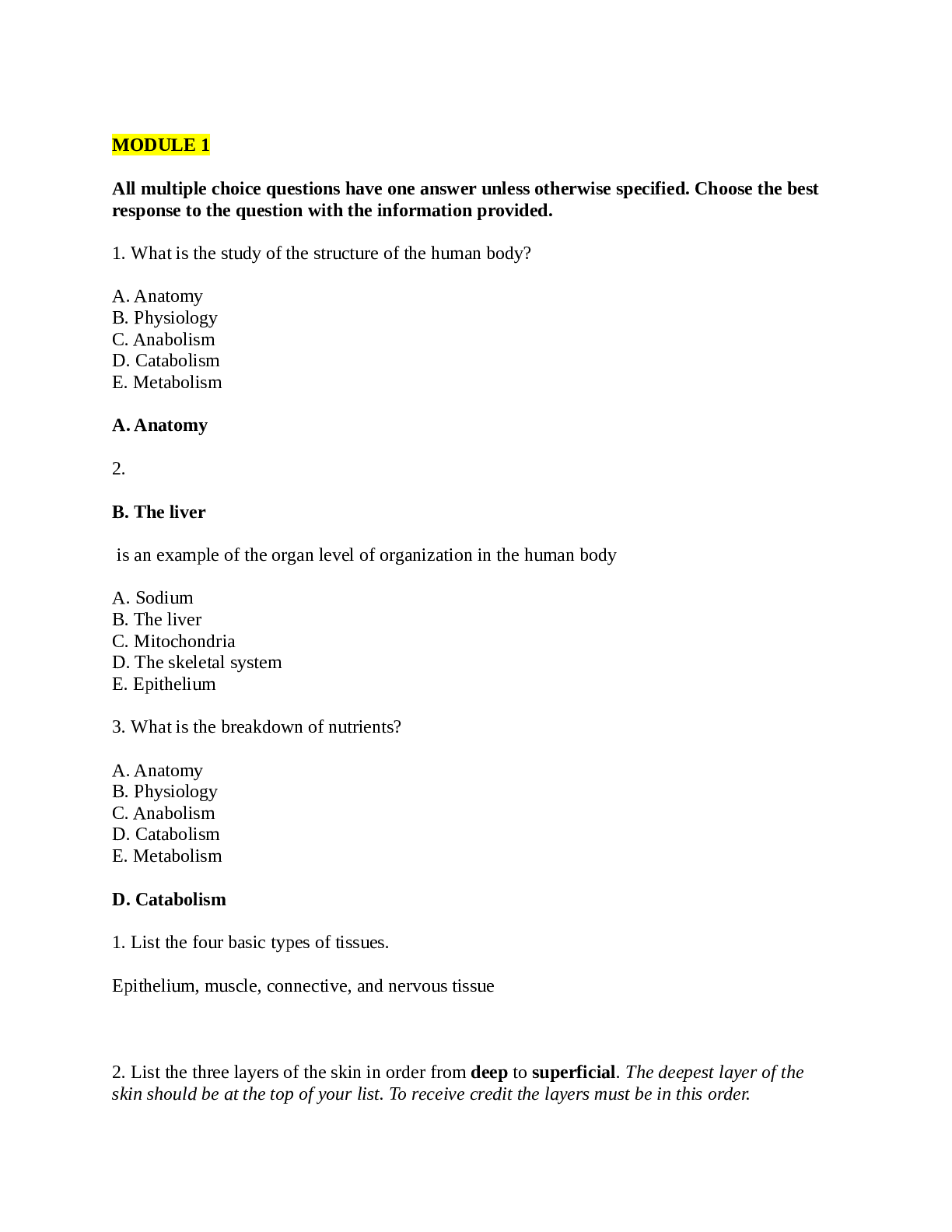
Reviews( 0 )
Document information
Connected school, study & course
About the document
Uploaded On
Jan 06, 2023
Number of pages
71
Written in
Additional information
This document has been written for:
Uploaded
Jan 06, 2023
Downloads
0
Views
56

